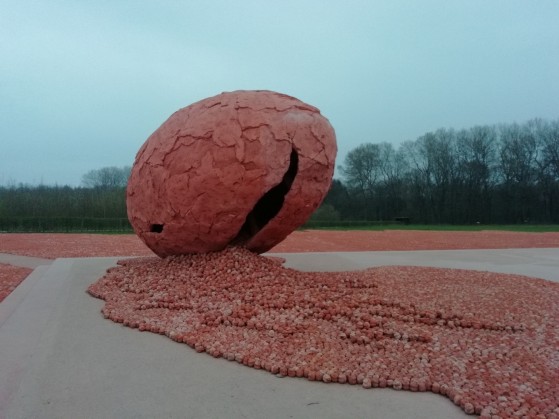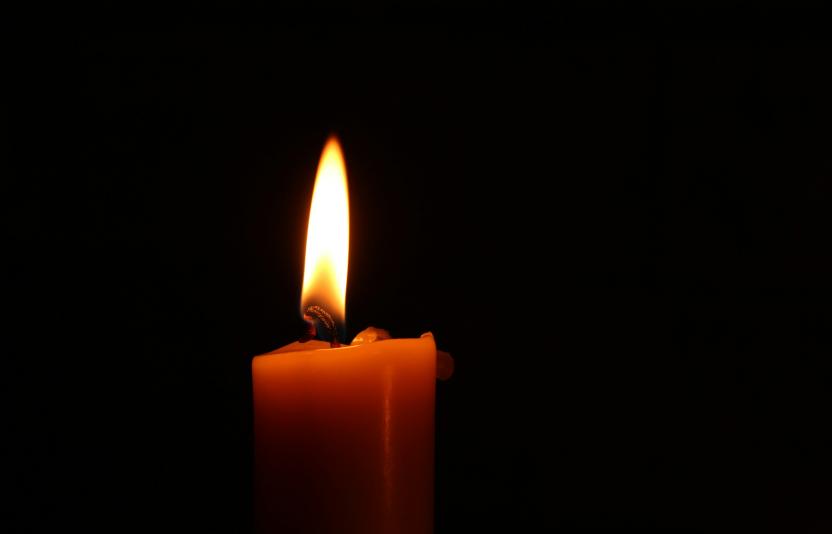Remembrance is a flower that never dies

From The Revd Gillian Trinder (Chaplain of St George's Memorial Church, Ypres):
Ypres is a sacred landscape of war cemeteries, monuments and churches which draws thousands of visitors a year on personal pilgrimages of remembrances. The life of the town is marked by a civic calendar of remembrance beginning with ANZAC Day in April and ending with Armistice Day in November. Other churches mark Remembrance Sunday once day in the year. But St George’s church holds Remembrance Day for someone every day of the year. At St George’s church our most popular service is not Christmas or Easter but Armistice when thousands flock here to Ypres to take part in the Remembrance Services.
Remembrance is central to the identity of St George’s Memorial Church in Ypres. The church was built at the request of the regiments who wished to have a memorial dedicated to their comrades who fought and fell here during the Great War. St George’s church was also founded with the intention of offering pastoral care to the families and relatives of the fallen soldiers. And this ministry still continues 100 years later among the thousands of pilgrims who come to see the war cemeteries and are drawn to visit the church and view its collection of Great War memorials. St George’s church has an active WW1 ministry to the visitors and tourists who are coming here in large numbers for the 2018 centenary commemorations to mark the end of the Great War.
The variety of remembrance ministry for the chaplain includes pilgrim services, graveside memorials for centenaries of death in the war cemeteries around Ypres, the dedication of memorial plaques in St George’s church and the dedication of new monuments to VC beneficiaries out on the battlefields. These are not opportunities that you would get in a parish church in the UK, but you do get them in the Chaplaincy of Ypres. People often tell me that I have the best job in the Church of England. And it is a great privilege to take part in people’s special occasions and to be invited to prepare a commemoration which will fulfil a family’s wish to remember and honour their fallen ancestor. Due to the unique role of St George’s, I have learned several new ministry skills since my arrival: how to lay a wreath at the Menin Gate, how to place a standard on the church altar, how to dedicate a memorial and how to bless a tank!
Remembrance ministry varies from the civic occasion to the personal ceremony. Recently, I have led a prayer for the fallen soldiers of the battle of Villers Bretonneaux under the Menin Gate on ANZAC Day. I have taken part in the dedication of two new headstones for recently identified Australian soldiers in Menin Road South cemetery. I have participated in the centenary commemoration of the heroic action of Captain John James Crowe VC at the battle of Neuve Eglise on 14th April 1918. I have taken a Service of Dedication for an individual memorial plaque to Cyril and Victor Trees in St George’s church. I have arranged the dedication of a wreath to the fallen members of the Royal West Kent Regiment at St George’s church by Bishop James Longstaff of Rochester Diocese. I have led a Service of Remembrance for the pupils of Highgate School at St George’s church. I have said prayers at three graveside commemorations for the anniversary of death for three fallen soldiers of the Great War out in the war cemeteries. Carved on a tombstone in La Plus Douve Farm cemetery I read the words: “Remembrance is a flower that never dies.”
I was talking to a colleague recently about the fascinating dimension of remembrance ministry at St George’s church. And he said to me: “It is a healing ministry you are exercising there, isn’t it.” And this really was the word in season and I have been reflecting upon it ever since.
In what ways is it a healing ministry?
It is a ministry of listening, of hearing the stories that have never before been told outside the family.
It is a ministry of prayer for both the living and the dead.
It is a ministry of dedicating memorials which testify to loss and grief.
It is a ministry of co-creating remembrance services which are personal, relevant and meaningful which tell the stories in the presence of God. And this is important in the face of a rise in secular commemorations which exclude prayer.
And it is a ministry of shaping liturgies which contain the uncontainable and express the inexpressible and release the burdens of sorrow and loss so that pilgrims can return back home again in peace.
What can be included in a service of remembrance? My concern is both to personalise the occasion to the individual and also to remember the dead in the sight of God. A service of remembrance can include the reading of a tribute to the memory of the deceased, the sounding of the Last Post bugles, Bible readings, reflective poems, letters from the battlefield and the playing of a piper’s lament. A well designed service leads the individual on a spiritual journey – a pilgrimage from a place of pain, loss and grief to a new place of peace, healing and resolution. Two gentlemen recently came to see me about the dedication of a regimental standard in St George’s church. They told me: “This is sacred to us.” So in the ministry of dedicating, commemorating and remembering the chaplain must always tread softly for you stand upon holy ground.
In 2018, a variety of creative projects have been launched to mark the centenary of the Armistice and to promote the remembrance of the fallen of the Great War. On 11th November, St George’s church will be taking part in the 'Ringing Remembers' project promoted by the Central Council of Church Bellringers to honour the memory of the 1,400 bell ringers who died during the Great War. We will be joining with UK churches across the nation to ring for the centenary of the Armistice.
In the park of De Palingbeek, south of Ypres, a walking trail featuring a range of war poems extends over no man's land and The Bluff, one of the hardest-fought places of the First World War. This leads visitors to a land art installation created by the artist Koen Vanmechelen to remind us of the tragedy of war: yesterday, today and tomorrow. Tens of thousands of people from Flanders and the rest of the world participated in 'ComingWorldRememberMe' by making 600,000 clay statuettes. Each statue represents a victim who died in Belgium during or due to the consequences of the First World War.




